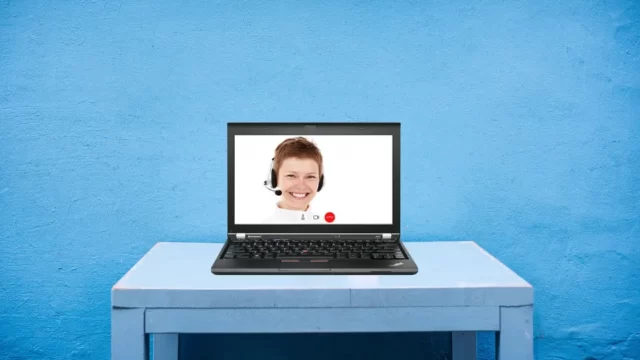Virtual learning is frequently related to online environments or courses. We’ll talk about virtual learning’s definition, traits, and advantages in this article.
Learning methods are changing as a result of the internet and computers. The term “virtual learning” refers to a learning environment supported by electronic devices both inside and outside of a learning environment.
It’s crucial that you have a solid grasp of what virtual learning is and how it operates, whether you’re developing an online course to sell, working remotely with elementary or secondary school students, or simply taking classes yourself.
To better understand what exactly it is, we are going to answer the question “What is online education?” and we will also explore a few tools that will make your virtual learning environment stand out.
What is Virtual Learning?
The delivery of the virtual learning experience can be done through computer software, online course materials, or a combination of the two. Through forums, instant messaging, live or recorded online videos, emails, and instant messaging, the instructor interacts with the students.
Real-time video streaming (using online meeting platforms) or asynchronous, on-demand classes with instructor feedback and participation are both examples of virtual learning. Virtual learning is successful because it is more interactive than eLearning courses that are merely offered online.
Advantages of Virtual Learning

Virtual learning has distinct advantages when compared to in-person classes, which are:
- Reduced Risk: A risk-reduction tactic in the event of a global pandemic is to avoid contact with other students.
- Inclusivity: If a student has a good Internet connection, they can participate in virtual learning from anywhere.
- Accessibility: Any student’s ability to access content is only constrained by their computer or tablet’s hardware and Internet bandwidth.
- Cost-Effectiveness: It is significantly less expensive to offer online learning opportunities than in traditional classroom settings.
- Global Perspective: Through the remote connection of individuals from various nations, a virtual learning experience can offer a broader perspective on the world.
- Improved Feedback: By frequently taking quizzes while engaging with the virtual learning material, students receive immediate feedback on their understanding of the material.
- Flexibility: Any enrolled student may access asynchronous educational content whenever they choose, 24 hours a day, 365 days a year.
- Comfort: In the comfort of their own homes, students can enjoy the course material.
- Community: Unexpectedly, participating in a shared virtual learning experience helps to improve community and relationship building.
- Improved Technical Skills: Students can learn how to conduct online research for school projects and develop a comfort level with computer technology.
Characteristics of Virtual Learning Environment
As we already mentioned, a virtual learning environment has its own special traits and features. Then, let’s look at its 10 most prevalent features to get a better idea of what virtual learning is all about.

- User-friendly Experience: A good virtual learning environment should be adaptable to the learner’s skills and development. Consequently, learning is personalized rather than using a one-size-fits-all curriculum and learning materials.
- Video Conferencing: Video conferencing software that enables interaction between the teacher and students is one of the essentials of virtual learning. This encourages communication and fosters the necessary social interaction in the classroom.
- Video Recording: The video recording feature is closely related to the video conferencing feature. By keeping the live lectures for future use and for anyone who couldn’t attend, this option eliminates a lot of hassle.
- Participation Control: Giving students a chance to interact during a live session is always a good idea. The ability to mute and unmute participants as well as allow them to virtually raise their hands is crucial for maintaining control over participation.
- Chat and Instant Messaging: There might occasionally be issues that don’t call for a video chat. Instant messages are helpful in this situation. Communication between students and their teachers as well as between students and other students is also improved.
- Digital Whiteboard: Using only video conferences can get quite monotonous, so it’s important to use a digital whiteboard to assist with explanations, diagramming, and demonstrations.
- End-to-End Encryption: In virtual learning, it’s crucial to manage who has access to the course materials and can join the live session.
- Assessment Tools: Assessment tools are a further element that virtual learning must have. With the aid of these tools, educators can monitor students’ progress and gauge how they are responding to the course material.
- Data Tracking: Learning materials can be made better by educators by using data from tracked students. It also enables the students to monitor their grades and make necessary adjustments.
- Notification and Alerts: Not to mention, notifications are one of the standard features in many online learning environments. When a student submits something or sends a message, educators can use it to be notified. Additionally, notifications can be used by students to remind them of upcoming deadlines.
Types of Virtual Learning
Virtual learning environments mainly fall into one of three categories. The main distinction between them is whether or not there is an interaction between the students and the teacher.

Synchronous Learning
Learners and teachers engage in real-time interaction in this kind of virtual learning. Video conferences or audio chats, enable students to participate remotely.
Asynchronous Learning
Learners and teachers do not communicate in real time during asynchronous learning. Instead, there are specific readings and assignments that the students must complete within a set amount of time.
Here, communication takes place on message boards and forums. Those who struggle to stick to a strict schedule will benefit greatly from this type of online education.
Hybrid Learning
Hybrid learning, as the name implies, calls for both in-person and online learning. In order to improve and complete the in-person learning experience, there is an online or virtual component.
Further Reading: Is E-learning The Same As Blended Learning?
What Do You Need for Virtual Learning?
In order to deliver the course materials as a virtual learning instructor, you will need some tools and a learning content management system. In a virtual school, you will need a system to monitor your student’s progress.
Here is the list of what a virtual learning instructor needs:

- Computer: Teachers want a computer that has enough RAM (8 MB or more), adequate file storage (1 TB is preferred), and is simple to connect to the Internet via Ethernet cable and Wi-Fi.
- Internet Connection: If you intend to conduct real-time virtual presentations using video streaming or group chats, a fast (10 MB per second or higher) Internet connection is essential.
- Microphone: In order for your voice to sound good, you should have a good microphone.
- Webcam: If you intend to use video streaming, you must have a webcam.
- Software In order to present the virtual learning content in an orderly manner and track students’ progress as they complete each section of the course, you need content management software.
A document camera and video editing software are optional tools if you want to make editing videos that students can watch on their own time. For a more convenient viewing experience, you might consider allowing students to speed up your online videos.
If you pursue certification in instructional design, you can advance your career as a virtual instructor and educator. For access to the virtual learning materials, students will need a computer or tablet with a strong Internet connection.
How Does Virtual Learning Differ from Traditional Learning?
The primary distinction between a traditional and virtual learning environment is that a traditional learning environment involves face-to-face participation in classes that are offered in a physical location, like a school.
Students don’t have to physically attend classes in order to access virtual learning (a virtual classroom).
Further Reading: Is Online Learning As Good As Face-to-face Learning?
Conclusion: Virtual Learning
There is no longer a place for traditional education in the twenty-first century. The educational process is made more efficient and accessible by the switch from traditional classrooms to online learning.
Future predictions predict that virtual classrooms will continue to revolutionize content delivery and promote global learning.
FAQs
Is the Virtual Classroom the Same as E-learning?
Different formats give you more flexibility in delivery options: By bridging geographical gaps between learning demands and delivery, the virtual classroom. eLearning: Self-paced learning, independent of geographic location and time.
Is Zoom Considered ELearning?
ZOOM Cloud Meetings, is the latest learning technology commonly known as application-based electronic learning and has been widely used by educators, especially lecturers.
Is Webinar a Part of eLearning?
While webinars cannot replace classroom training, they can offer a robust synchronous eLearning experience for learners who cannot attend face-to-face training. To learn about some of the most popular free web conferencing tools as well as other helpful eLearning tools, sign up for my free eBook.

